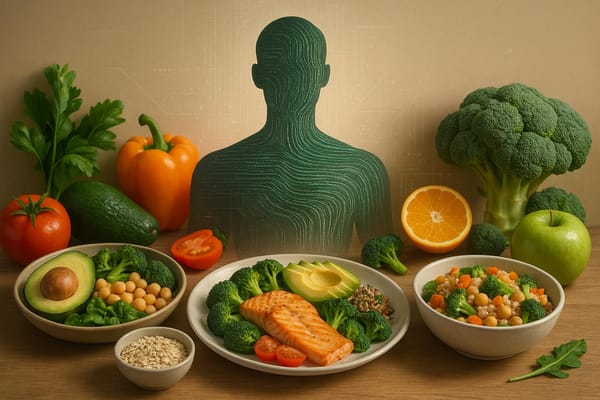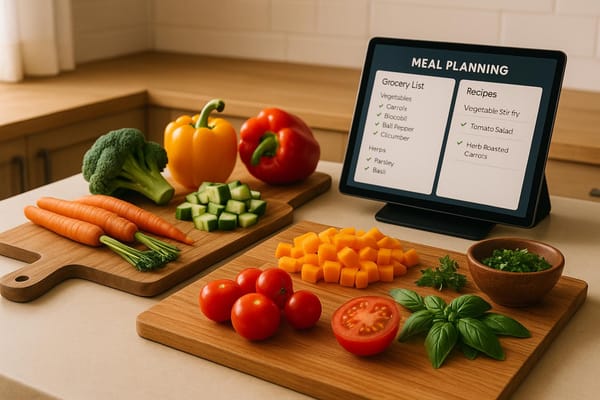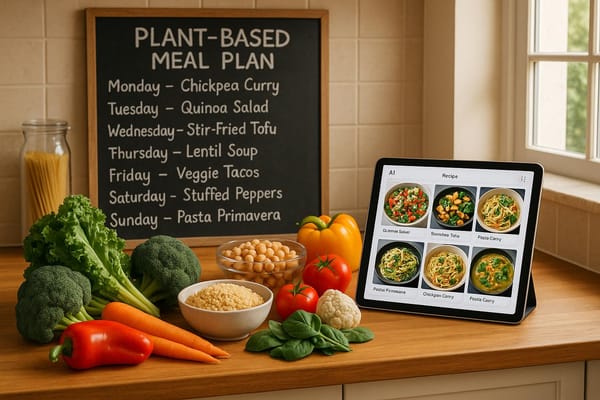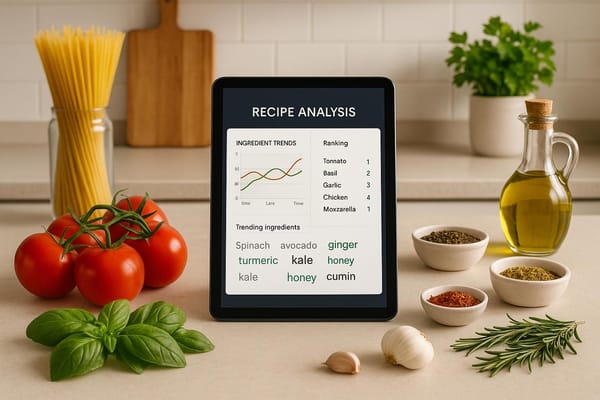How AI Simplifies Family Meal Planning
Explore how AI tools streamline family meal planning by creating customized menus, organizing grocery lists, and tracking nutrition effortlessly.
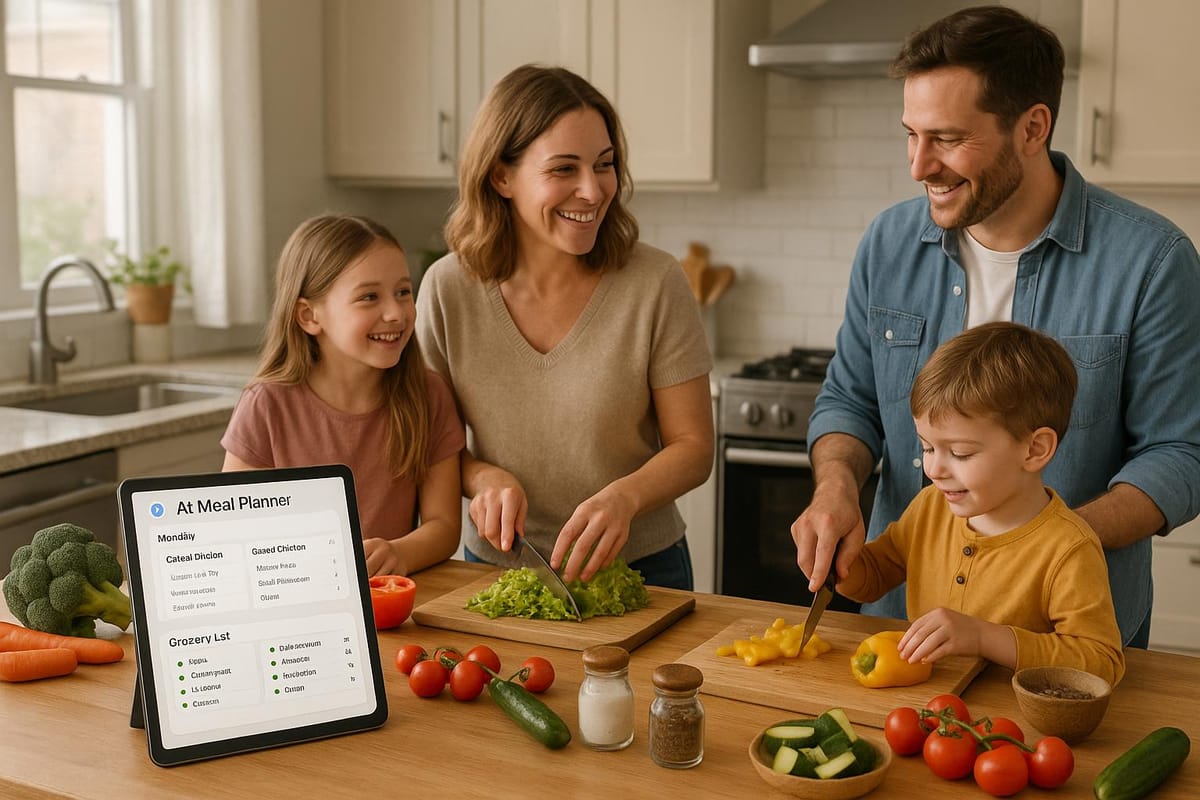
AI meal planning tools are transforming how families organize meals, saving time and reducing stress. These tools handle everything from creating menus tailored to dietary needs and preferences to generating grocery lists and syncing schedules. For busy families, AI makes meal planning simpler and more efficient.
Key Benefits of AI Meal Planning:
- Customized Menus: AI considers allergies, preferences, and time constraints to create tailored meal plans.
- Organized Grocery Lists: Automatically generate lists sorted by store sections, reducing waste and unnecessary purchases.
- Collaborative Planning: Family members can share ideas, vote on meals, and adjust plans in real time.
- Nutrition Tracking: Track calories, protein, and other nutrients to meet health goals.
- Time-Saving Integrations: Sync with grocery delivery services like Instacart for one-click shopping.
AI tools like Honeydew Recipe Manager make meal planning a breeze for families, offering features like recipe imports, shared calendars, and nutrition insights for just $4.17/month. With these tools, families can focus less on logistics and more on enjoying meals together.
Exactly how I use ChatGPT for my weekly meal planning
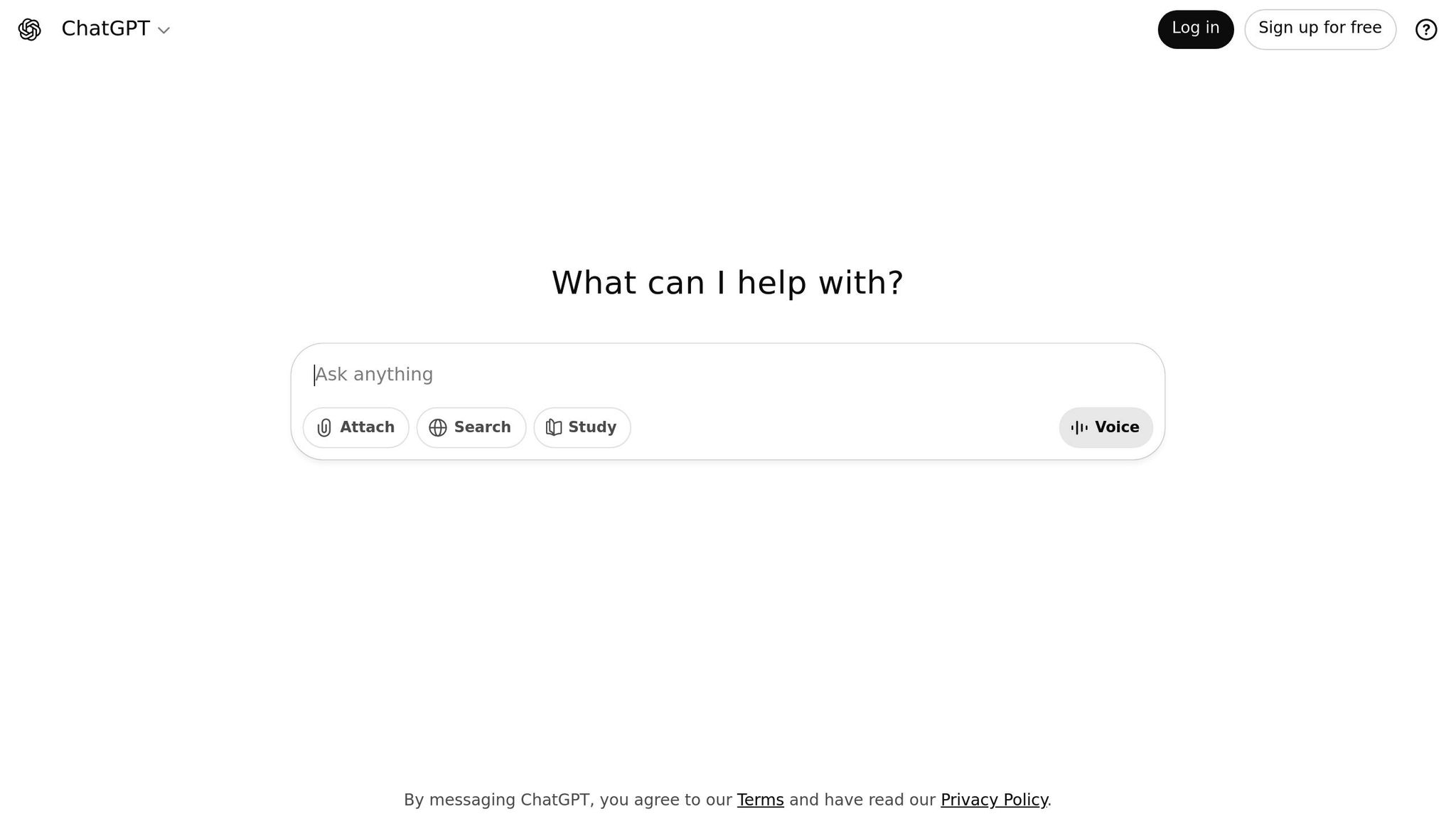
Creating Custom Meal Plans with AI
AI-powered meal planning has turned the once time-consuming task of feeding your family into a more efficient and tailored process. Instead of spending hours searching for recipes or juggling dietary restrictions, AI tools analyze your family's unique needs and create meal plans that fit everyone.
Adjusting Meal Plans for Your Family
What makes these tools even more helpful is their ability to adapt to your family's specific preferences and requirements. By simply inputting details like allergies, portion sizes, dietary restrictions, favorite cuisines, prep time limits, and budget, you can generate meal plans that check all the boxes.
Take Honeydew Recipe Manager, for instance. When you request a meal plan, you can filter options like "Vegetarian", "Quick & Easy", or "Family Favorite", and the AI will craft a weekly menu tailored to your choices. Need meals that are both gluten-free and nut-free? No problem - the AI ensures all recipes meet those criteria. You can even set specific nutritional goals, such as a five-day dinner plan with at least 25 grams of protein per meal, each under 600 calories.
Another advantage is the ability to make real-time changes. If you’re out of a key ingredient or want to swap a meal, most tools instantly update both your meal plan and grocery list. This kind of flexibility ensures your plan can evolve with your needs, saving you time and effort.
Getting Variety and Balance in Weekly Menus
One of the biggest challenges in meal planning is keeping things fresh while ensuring meals are nutritionally balanced. AI tools help solve this by tracking the ingredients and recipes used throughout the week, so you’re not stuck repeating meals or missing out on key nutrients.
These systems are designed to add variety by incorporating a mix of proteins, vegetables, and cuisines into your menu. For example, Honeydew Recipe Manager uses smart categorization to pull from options like "Quick & Easy", "Vegetarian", or "Family Favorite", creating diverse weekly plans. With the Honeydew Plus plan, you can store unlimited recipes, giving the AI an extensive library to work with and naturally introducing more variety into your meals.
Nutritional balance is another key feature. Many AI tools include trackers that monitor daily intake of calories, protein, fats, carbs, and fiber, ensuring your meals are not only diverse but also meet your family’s nutritional needs. For households with multiple dietary preferences or restrictions, features like shared profiles for up to six members ensure everyone’s needs are considered when creating balanced menus.
Convenience is taken a step further with smart ingredient substitutions. If a recipe includes something your family doesn’t like or can’t eat, the AI can suggest alternatives that maintain the dish’s nutritional value.
Nutrition experts suggest starting with clear, detailed prompts when using AI meal planning tools and tweaking the plans based on your family’s feedback. Think of the AI as a learning assistant - it gets better at tailoring meals to your preferences over time. This approach not only ensures balanced and varied meals but also makes sharing recipes and tracking nutrition a seamless experience.
Shared Cooking and Recipe Management
AI-powered platforms are transforming family meal coordination, turning what used to be a chaotic process into a well-organized system where everyone can participate and stay updated.
Shared Meal Planning for All Family Members
Modern AI tools make meal planning a truly family-wide activity. These platforms allow everyone - parents, teens, and even younger kids - to pitch in by suggesting meals, voting on options, and keeping track of weekly plans through shared digital calendars. Gone are the days of wondering who’s cooking or what’s for dinner.
Take Honeydew Recipe Manager, for example. With its Honeydew Plus plan (priced at $4.17 per month), up to six family members can collaborate on meal planning. The shared calendar lets everyone see what’s on the menu, contribute ideas, and adjust schedules in real time. If mom has a late meeting on Tuesday, dad can easily spot that and step in to handle dinner. Similarly, teens with sports practice can update their availability, allowing the app to automatically adjust meal times.
The app’s drag-and-drop interface makes it simple to shuffle meals around or propose changes. Instead of endless discussions, family members can make adjustments directly in the app. Notifications for upcoming meals keep everyone in the loop, ensuring no one misses dinner prep or needs to ask, “What’s for dinner?”
These tools also cater to diverse dietary needs. AI-generated meal plans can accommodate allergies, dietary restrictions like vegan or gluten-free preferences, and individual tastes by analyzing each family member's profile. It’s meal planning made simple, efficient, and inclusive.
Organizing Recipes Simply
AI has also revolutionized how families organize and share their favorite recipes, making scattered cookbooks and misplaced index cards a thing of the past.
Recipe import features are now incredibly advanced. For instance, Honeydew Recipe Manager allows users to import recipes from virtually anywhere - social media, websites, or even photos. Spot a dish on Instagram or a cooking blog? You can save it instantly to your digital collection.
"Being able to import recipes from anywhere has built my cookbook faster than I ever imagined." - Priya K.
Once imported, smart categorization takes over. AI can automatically sort recipes into logical groups - like vegetarian dishes, quick meals, or holiday favorites - without requiring manual tagging. This makes it easy for anyone in the family to find exactly what they need, whether it’s a 30-minute dinner or a festive dessert.
Family recipe collections have become digital treasure troves for preserving cherished dishes. With unlimited recipe storage available through the Honeydew Plus plan, families can build extensive collections without worrying about space. These collections are especially helpful in households where multiple people cook, ensuring everyone has access to grandma’s famous lasagna or dad’s signature barbecue sauce.
The searchable interface is a game-changer. Instead of flipping through old cookbooks or digging through drawers, family members can search by ingredient, cooking time, dietary restrictions, or cuisine type. Got chicken in the fridge? A quick search will pull up every recipe that fits the bill.
This level of organization also encourages shared cooking responsibilities. When recipes are easy to find and clearly categorized, it’s simpler for family members to take turns in the kitchen. Teenagers can even start learning family favorites with confidence. Plus, the digital format ensures that recipes are safe from spills, wear, or loss, and any updates are instantly synced across all devices. It’s a modern way to keep family cooking traditions alive and thriving.
Making Grocery Shopping and Scheduling Easier
AI is transforming some of the most time-consuming tasks in meal planning - like creating grocery lists and keeping everyone on the same page - into simple, automated processes. The result? Less stress, more time saved, and even some extra money in your pocket.
AI-Generated Grocery Lists
Imagine never having to guess how much of an ingredient you need again. AI-generated grocery lists do just that by pulling exact quantities from your weekly recipes. These lists are tailored to your household size and meal plan, helping you avoid overbuying and ensuring you only get what’s necessary.
Tools like Honeydew Recipe Manager take it a step further. They create smart grocery lists that factor in what’s already in your pantry, so you’re not buying duplicates. Honeydew can even suggest recipes based on the ingredients you already have, cutting down on waste. According to the USDA, accurate AI-generated lists help reduce food waste significantly.
"I used to waste so much food. Now with Honeydew's meal planning, I buy exactly what I need and save money!" - Mark T.
These lists are also organized by store sections - like produce, dairy, and meat - making your shopping trip faster and more efficient. Instead of wandering the aisles trying to remember what you need, you can follow a clear, logical path through the store.
For families with dietary restrictions, AI simplifies things even further by automatically excluding unsuitable ingredients and suggesting safe alternatives. This makes grocery shopping easier and ensures everyone in the family can enjoy the meals.
Making Shopping Easier with Delivery Integration
Honeydew Recipe Manager also integrates seamlessly with Instacart, letting you place orders directly from your meal plan with just one click.
Gone are the days of manually transferring items between apps or websites. Once your AI-generated list is ready, you can send it straight to Instacart for home delivery. This is a huge time-saver, especially during busy weeks.
If an item on your list is out of stock, the system automatically suggests alternatives based on your preferences and past purchases. For instance, if your favorite pasta brand isn’t available, it’ll recommend a similar option that fits your needs.
"The smart grocery lists save me hundreds of dollars a month." - James L.
A 2024 survey by the Food Marketing Institute found that over 60% of U.S. families are interested in using technology to simplify meal planning and grocery shopping. The convenience of one-click ordering reduces the hassle of juggling multiple apps and services, making the whole process smoother.
Delivery integration is especially helpful during hectic weeks or when store hours don’t align with your schedule. Parents can place an order during their lunch break, and groceries will arrive at a convenient time - no more last-minute dashes to the store. AI also helps sync meal schedules across devices, further simplifying family coordination.
Syncing Meal Schedules Across Devices
AI doesn’t just make meal planning and shopping easier - it also keeps everyone in the loop. With AI-powered apps, meal schedules sync automatically across all family devices, cutting out the need for endless group messages or confusion over who’s responsible for what.
For example, Honeydew Recipe Manager offers a Honeydew Plus plan for $4.17 per month, which supports sharing among up to six family members. Updates happen instantly, so everyone knows what’s on the menu and who’s handling dinner.
This syncing feature also keeps grocery lists up to date in real time. If someone picks up an item early or notices something running low, they can update the list, and the changes will be visible to everyone. This prevents duplicate purchases and ensures nothing important gets missed.
Tracking Nutrition and Health Goals
AI meal planning tools have made tracking nutrition a breeze, offering detailed insights into every meal. Gone are the days of manually counting calories or estimating nutrient content - these tools do the heavy lifting for you. By providing precise data on macronutrients and micronutrients, they help guide smarter meal choices and support healthier eating habits.
Built-In Nutrition Tracking
Today’s AI meal planning apps can automatically analyze recipes to calculate calories, macronutrients, and micronutrients for each dish. For example, Honeydew Recipe Manager provides built-in nutrition tracking, breaking down meals into specific data points like 90 calories, 25g protein, 16g fat, 50g carbs, and 3g fiber. It also compiles daily and weekly totals for key nutrients like protein, fiber, sodium, and calories. Families can set custom nutrition targets and receive visual feedback, making it easier to stay within dietary guidelines or meet health goals.
These tools also cater to specific needs, such as allergies or dietary restrictions. For instance, a family looking to lower sodium intake can generate meal plans with sodium limits, view the sodium content of each meal, and receive alerts if a menu exceeds their target.
Most apps rely on trusted databases like USDA FoodData Central to ensure accurate nutrient calculations. While these tools are incredibly helpful, nutrition experts recommend using them as a complement to professional advice, especially for complex dietary requirements.
Supporting Long-Term Dietary Goals
Beyond day-to-day tracking, AI tools provide valuable long-term insights. They generate reports that track progress over time, helping families adjust their diets to achieve goals like weight loss, reducing sodium intake, or boosting fiber consumption. These reports can be shared with healthcare providers or used to fine-tune meal plans, keeping families accountable and on track for sustained health improvements.
A 2023 survey by the International Food Information Council revealed that 52% of Americans are interested in using technology to manage their nutrition and dietary goals. This growing trend highlights the role AI tools play in helping families prioritize their health.
Some apps, like Honeydew Recipe Manager, offer collaborative features that let multiple family members participate in meal planning. For just $4.17 per month with the Honeydew Plus plan, up to six people can join in, ensuring everyone’s preferences and dietary needs are accounted for.
Many AI meal planning tools also sync with fitness trackers and health apps, creating a comprehensive picture of health by integrating meal data with physical activity and other metrics. This approach makes it easier to monitor calorie balance, nutrient intake, and progress toward broader wellness goals, such as weight management or improved heart health.
The secret to maximizing these tools lies in regularly reviewing the insights they generate. By identifying patterns - like nutrient deficiencies or overconsumption - families can adjust their meal plans to maintain a balanced diet. AI tools can even suggest ingredient swaps and ensure variety, keeping meals interesting while supporting overall health and nutrition goals.
The Future of Family Meal Planning with AI
AI is reshaping family meal planning, turning what was once a tedious task into a smooth, tailored experience. What began as basic recipe suggestions has now evolved into a sophisticated tool that tackles the unique challenges of modern households.
One of the biggest perks? Convenience. Future AI advancements promise even deeper integration with grocery services and smart kitchen gadgets. Imagine syncing your meal plan directly with your fridge or having your shopping list automatically update and connect to delivery services. These features will save families even more time, freeing up hours each week that would otherwise be spent juggling menus and lists.
AI is also getting smarter with every update. By learning from family feedback, these tools will offer meal plans that are even more precise and adaptable. They’ll account for individual preferences, dietary needs, and health goals. For example, whether it’s accommodating a teenager with gluten intolerance, a parent monitoring sodium intake, or a toddler in a picky eating phase, AI will adapt instantly to ensure meals are nutritious, varied, and suited to everyone’s needs.
Looking ahead, AI tools will also enhance collaboration within families, improving communication about food choices and encouraging shared responsibilities in meal prep. These features build on existing shared planning capabilities, making meal planning a more inclusive and interactive process.
The popularity of AI meal planners is already soaring. According to RankmyAI, these tools were among the top 25 most-used AI applications for daily life in August 2025, highlighting their growing role in U.S. households. As more families experience the benefits of delegating meal logistics to technology, adoption rates are expected to climb even further.
Future iterations will bring even smarter personalization, advanced nutrition tracking that syncs with fitness apps, and seamless partnerships with grocery delivery services. The result? Meal planning will feel effortless, giving families more time to enjoy what really matters - sharing meals and moments together.
FAQs
How can AI help plan meals for families with different dietary needs and preferences?
AI-driven tools, like Honeydew Recipe Manager, simplify meal planning by accommodating a wide range of dietary needs and personal tastes within a family. By evaluating individual factors - such as allergies, dietary restrictions, or preferred cuisines - these tools can suggest recipes tailored to suit everyone.
With helpful features like shared meal planning and automatically generated grocery lists, AI ensures that the needs of all family members are addressed. At the same time, it streamlines the process, making meal planning easier and less overwhelming, even for households juggling diverse diets.
How can AI tools like Honeydew Recipe Manager help save money and reduce food waste?
AI tools such as Honeydew Recipe Manager simplify saving money and reducing food waste by helping you plan meals more effectively. The app generates smart grocery lists with exact ingredient amounts, ensuring you purchase only what’s necessary. It also offers substitution suggestions, allowing you to make the most of ingredients already in your pantry.
By making meal planning more efficient and cutting down on excess purchases, Honeydew helps families stay within their budget while using up ingredients before they go bad. Many users report that this not only trims their grocery expenses but also significantly cuts down on kitchen waste.
How do AI meal planning tools work with grocery delivery services to make meal prep easier?
AI-powered meal planning tools, like Honeydew Recipe Manager, simplify meal prep by linking directly with grocery delivery services such as Instacart. After you finalize your weekly meal plan, the app creates a comprehensive grocery list and lets you order all the ingredients in just a few clicks. It’s a straightforward way to save both time and effort.
By streamlining the shopping process, these tools ensure you’ve got everything you need for your meals without the stress of running errands. That means more time to cook and enjoy meals with your family.

